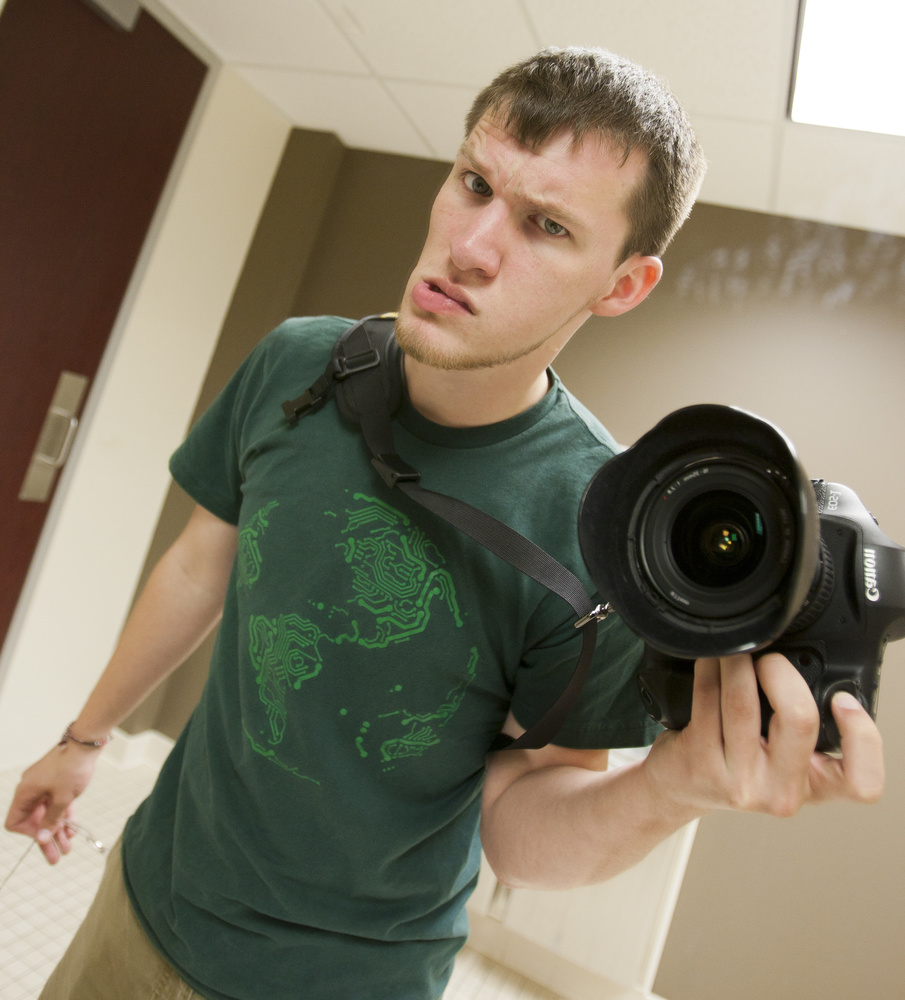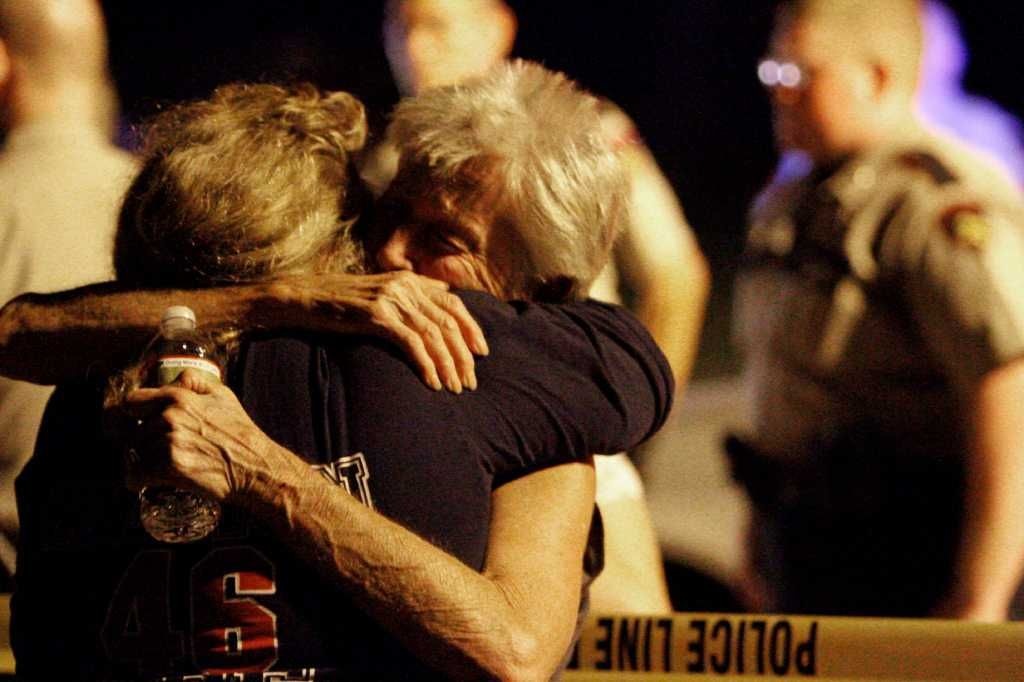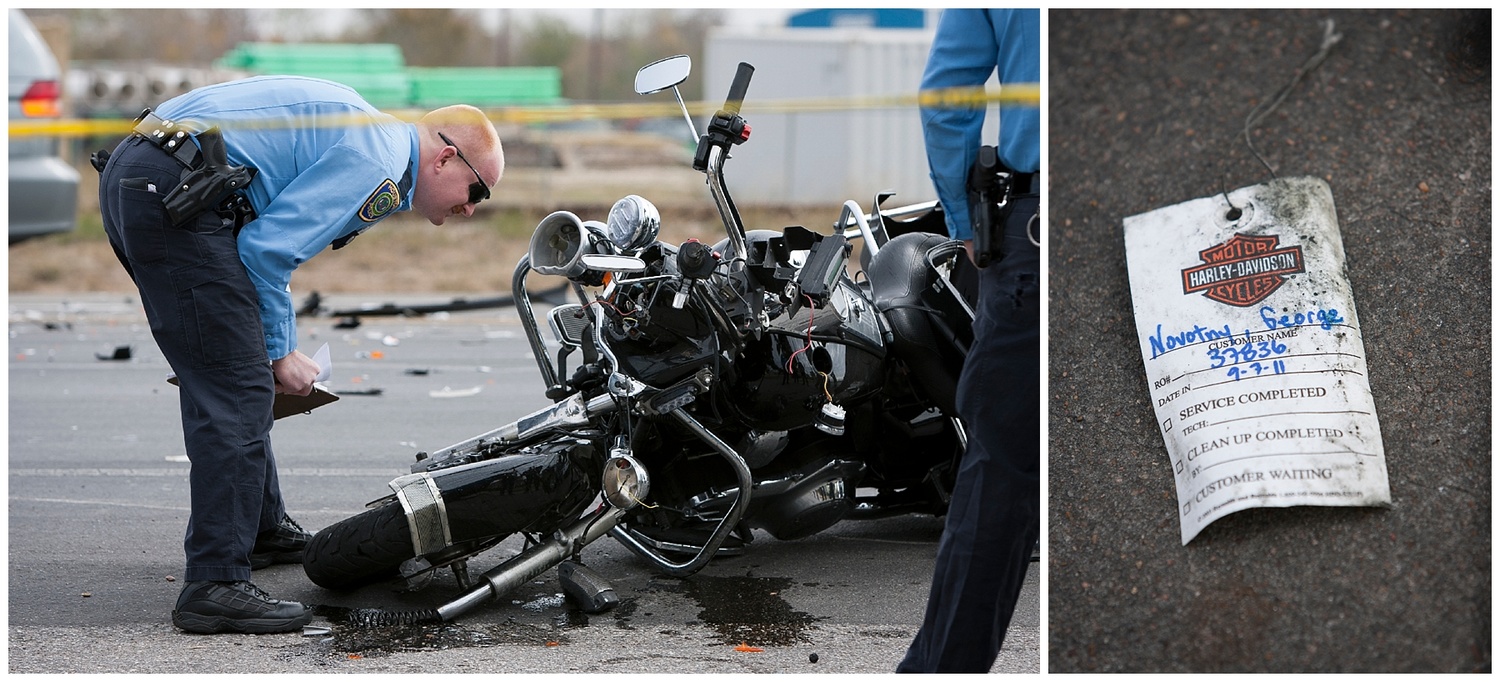I’ve attended plenty of workshops in my time as a photographer. I’ve attended classes taught by Joe McNally, David Hobby, Joel Grimes, and more. I’ve assisted some of the best photographers in a variety of fields, and watched dozens of tutorials put out by some really top-tier shooters. It’s pretty safe to safe to say that I have had a solid amount of training through a variety of sources, but no amount of classes or YouTube videos will ever compare to the five months I spent interning at a large newspaper.
Photojournalism isn’t for everyone, it’s hectic, deadline-driven, and unforgiving. Those very aspects, though, are what make it a fantastic crucible to shape your photography skills. I got into photography my freshman year at college (Houston Baptist University what-what!). By the end of my junior year at school I was shooting professional sports and even had some national bylines to my name. It’s pretty safe to say that I thought I was, in a word or two, “the shit.” I was big fish in a small pond, our school newspaper was actually pretty great at the time, winning national awards on a regular basis for our writing, editing, and layout, but our photo department was lacking. This meant that I was shooting a LOT for the paper, and I was even doing good work, but it led me into a false belief that I was “killing it.”
Thanks to the sports I was shooting, I began to develop relationships with some of the other shooters in town. One in particular was a guy named Nick de la Torre, a shooter at the time for the Houston Chronicle. Nick really took me under his wing almost absentmindedly, giving me tips when we were shooting baseball, letting me borrow some of his big telephoto lenses that I had no way of affording at the time, critiquing my stuff, and generally giving me a lot of the guidance and feedback that college classes and the university newspaper just can’t provide. Eventually, I started asking him if the Chronicle ever did photo internships and what my chances might be of getting a spot there. Long story short, Nick put in a good word for me, I had an interview, and I was in. In over my head.

Me in 2011, "killing it".
I’m giving you this long introduction to try and help you understand that nothing can adequately prepare you for shooting at a big daily newspaper. You might feel like you’ve really got this photography thing nailed down, but the demanding chaos that is a daily publication deadline strips all of your illusions about yourself away. There is a huge difference between being able to visualize and execute a photo, and visualizing and executing that same photo on the fly, in poor conditions, with sub-optimal gear, and the pressure of a pending deadline in an hour.
My first few weeks at the Chronicle I was just trying to learn the ropes. I assisted some of the staffers on shoots, learned the editing and captioning process, found out what a “feature” was (true story, I had no idea what a feature photo was, big apologies to my editor on taking so long to get my head wrapped around the idea), and generally just tried to find a moment where I wasn’t overwhelmed. Nick had warned me before I started that there wasn’t going to be much coddling. “We play with live ammo over here” he said, “We don’t have time to hold your hand, we need you to get out and shoot.” That statement encapsulates what shooting for a daily newspaper is like and, if you let it, it can completely transform your photography. Here are a few ways that happens.
You Learn By Doing, But Especially By Failing
I had a great editor at the Chronicle (Steve Gonzales), and the editor is a major key to the success of a photojournalist. You can certainly succeed with a bad editor, but a good one truly helps you excel. Steve knew I was an intern, knew I was in over my head, and knew I would fail sometimes. He gave me assignments that allowed for me to mess up and learn the ropes, and he provided great feedback on what I needed to do differently, whether that was in my thought process, execution, captioning, whatever. Being afraid of failing means that you will never try and you will never improve. Embrace failure as a learning tool that helps you pinpoint areas of weakness where you can grow.

This is a really bad photo, and it was 100% my fault.
You Overcome Over Thinking
When you’re shooting a news assignment you simply don’t have time to second-guess all of your decisions. I would often go into situations knowing I had a limited amount of time to shoot a portrait or cover an event without any idea of what the location or lighting looked like. As soon as I got over the stress I would put myself through in those moments and learned to trust my instincts and just shoot what made sense, I immediately started shooting better photos. We are often our own worst enemies get caught up trying to do too much or make everything perfect.

Don't think, just shoot.
You Learn That You Don't Have to Be Perfect
Seriously. You can be excellent without being perfection, and you can pursue perfection without being overwhelmed by the need for it. One of your greatest strengths as a photographer is your unique perspective and point of view, two things that can often get lost in a stressed out drive for perfection. You are not always going to hit home runs. Hell, you aren’t always going to hit triples or doubles either. Sometimes just getting on base is okay, it’s what you do once you’re on base that matters most. Give yourself permission to be imperfect while still maintaining a commitment to excellence and you will go a long way.

Not a perfect portrait, and that's okay.
You Shoot, A Lot
Seems obvious, but when you’re shooting for a paper you really are shooting all the time, and you’re shooting just about everything under the sun. One of my first weeks at the Chronicle I started off the morning shooting an NFL game between the Texans and the Colts. I left the stadium early in the evening and went by the office and got a last minute assignment to shoot a nearby 9/11 memorial (it was September 11), as I walked back into the office I got called out to shoot the scene of a double-murder homicide. Talk about a crazy day.

I went from shooting this....

To shooting this.
Newspapers will give you all sorts of assignments. While I was at the Chronicle I was also doing all the photography for a local monthly paper that had regional issues. I was shooting upwards of 20 assignments a month for them that took me all over Houston and had me shoot a wide range of businesses and people.

I would go from shooting food...

To shooting a portrait...

To shooting roller derby!
You Become a Detective
Okay not really, but kind of. You learn how to handle unexpected situations and people. You become more aware of details around you and start to catch little things that other people might miss. You really develop a bit of a detective’s nose for clues and you start learning you start learning how to anticipate people and events so you can be in the right spot to get that one really great shot. You learn how to blend in while still capturing everything. Lots of times the photographer is on the scene before a reporter and you are expected to be able to give a rundown of the story once they show up or contribute information of your own. I had to shoot the scene of an accident involving a motorcycle officer, I happened to notice a service tag from his bike on the ground, and was able to give my editor the name of officer who was hit. We didn't use it in the article because there was no official confirmation, but my editor was really impressed that I was able to track that down.That's the kind of stuff you start looking for when you're working for a newspaper.

The crash scene and the service tag.
You Start to Take Deadlines Seriously
If you struggle with deadlines a newspaper will cure you of it quick, or spit you out and tell you to find a new career. The press (“blogs” for you younger folk) waits on no man. If you have a deadline you damn well better meet it and have your i’s dotted and your t’s crossed, because there’s no “edit” button for a printed newspaper. And trust me, the universe will conspire against you to keep you from meeting those deadlines. Your card reader will go out or your phone won’t tether correctly. You’ll realize you forgot to get the spelling of the name of someone in the photo or your car will get a flat tire. Stuff will happen, so you learn to be prepared and aim to beat that deadline handily every time.

Even news conferences about wire theft have hard deadlines.
Nothing can create a trust in your own abilities quite like having to rely on them day in and day out in high-pressure situations. My time at newspapers was one of the most impactful experiences I have had as a photographer. All of the images in this article are either from my time as an intern or my first year freelancing for the paper post-internship. They’re included to illustrate my points and not as some huge testament to my skill. Most of these photos are exactly what you would expect from an intern, but they were miles beyond what I had been shooting before I got to the paper. I don’t really shoot any news assignments any more, but my time working in daily print journalism has influenced me in all areas of my career. I’ve shot for big papers, small papers, online news, you name it, and they all challenged me and help me grow as a photographer. I would absolutely encourage anyone who is interested in a similar experience to seek out opportunities where you live.







That's a really good insight into what looks like an exciting and potentially rewarding job.
This is good evidence that there's a real need for professional newspaper photographers. You can't crowdsource everything.
It's mostly true. Differences of what you experienced and what I do, probably will be caused by the way the newspapers work in your or my country. No staffers here on the payroll of newspapers. Those days are over long ago. You work freelance or for a photo-agency, not for a newspaper.
Makes it sometimes very difficult to understand what the newspaper wants. Sometimes we got an adress and time. And that's it. I'll ave ten minutes before I have to leave to the next job and I don't even know what I have to shoot (a building, a person, a group?) or even why I have to shoot it (the context)
Makes it sometimes very stressy. I'm doing this for a couple of years now and it's still difficult to explain that a photographer also needs good information. It will help him/her to create a better photo.
But it certainly gives you an edge when it comes to certain things. You do, like you tell, get a nose for your surroundings, blending in and still take your photo's.
Good story
Really good points. And the direction of newspaper photography was the reason I chose to not continue pursuing it as a career. I definitely had assignments with 0 direction besides "show up to X place at X time" with no information as to what the story would be or what mindset I should have going in.
cool read. I got back to photojournalism one year ago after ten year gap and must say - it's a mincing meat machine. Doing up to 12 assignments a day takes a toll. But once you get a hang out of it, it's a rewarding job. You will meet a lot of people, shoot every single genre of photography and get experience. However I still prefer studio work and time for creative workflow.
Good story. I started out years ago as a commercial photographer and then moved into photojournalism at a major newspaper. Thrown into the water and it's sink or swim! It was an insane and overwhelming experience, and I learned more in a short time period than I did in all the years previous years combined. You gain so much knowledge in so many areas very, very rapidly. And I had a rocking good time.
Working for a newspaper is incredibly challenging and during my brief stint at one I realized it was not for me... try everything that you can! learning what you don't want to do is as important as what you don't want to do.
I was the first full time tog for a newspaper in Kalgoorlie, a very large country town in Western Australia. I was allowed two rolls of film per day and everything had to be printed (glossy 8" x 10") and put in an overnight bag to arrive at the newspapers head office in Perth (600 kilometres away) by 5pm each day - you want stress? he he - I loved it!
When the Space Shuttle fleet was flying, I would watch the NASA video conferences. It was a sad day when the Houston Chronicle laid off Mark Carreau.
Love my photojournalism work, and it is a great way to shape up your photo skills. My photography improved 10 fold when i started shooting for newspapers and magazines. And now at times i feel a bit of prowess compared to portrait photographers, who have all the time in the world and all the control they want to get a perfect image, where as i have 30 minutes in an uncontrolled environment at noon to hope my skills at feeling out the situation have put me in the right place to get a good shot.
I think It's that "uncontrolled" aspect of it that keeps me drawn in to the work, and has sharpened my skills in other aspects of my career.
When people ask my why i don't do portrait work, i always talk about the difference between taking photos and making pictures, and how because of my editorial work i've become really good at finding moments and not so great at creating them.
Glad to see a blog about photojournalism-
What is all said in this article is all true. It is my evrey day life and I love it.
I can't agree more.
Until your sat in some hot room culling in photo mechanic between periods or quarters to get shots to the desk in time for web or print, then just finishing up a day at 11 pm, only to be sent out on a house fire or crimes scene, and then do it all over the next day...and the days after that... Shooting, quality, knowing your going to get reamed from an editor over something.. You've not really shot photographically.